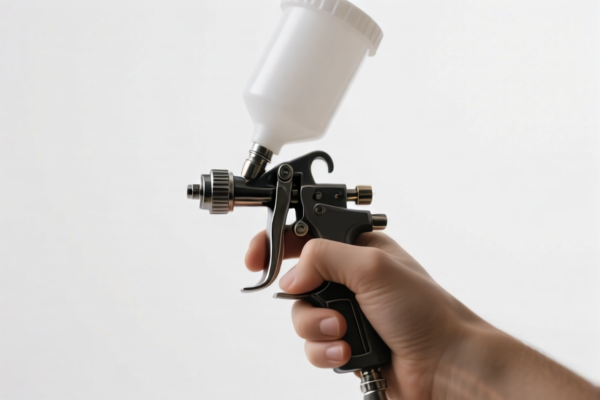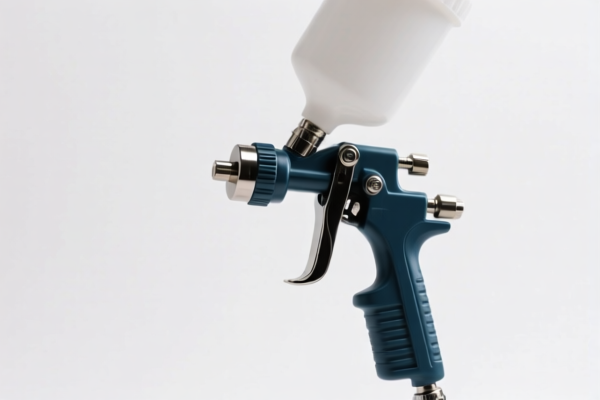| HS Code | Official Doc | Tariff Rate | Origin | Destination | Effective Date |
|---|---|---|---|---|---|
| 8424201000 | Doc | 57.9% | CN | US | 2025-05-12 |
| 8424209000 | Doc | 55.0% | CN | US | 2025-05-12 |
| 8206000000 | Doc | The rate of duty applicable to that article in the set subject t+30.0% | CN | US | 2025-05-12 |
| 9616100000 | Doc | 37.5% | CN | US | 2025-05-12 |
| 9616200000 | Doc | 34.3% | CN | US | 2025-05-12 |




Spray Tools
Spray tools are devices used to apply liquids in a dispersed form, typically as a mist or fine stream. They are employed across a broad spectrum of applications, ranging from household cleaning and painting to industrial processes and agriculture.
Materials
Spray tools are constructed from a variety of materials, selected based on the liquids being sprayed, the application environment, and cost considerations. Common materials include:
- Metals: Stainless steel, aluminum, brass, and various alloys are used for durability and resistance to corrosion, particularly when handling harsh chemicals or abrasive materials.
- Plastics: Polypropylene, polyethylene, and other polymers are common for lighter-duty applications and resistance to specific chemicals. Often found in hand-held sprayers.
- Rubber/Seals: Used for gaskets, O-rings, and diaphragms to ensure leak-proof operation and compatibility with the sprayed liquid.
- Ceramics/Special Alloys: Employed in nozzles for abrasive or high-temperature applications.
Purpose & Function
The primary purpose of spray tools is to break down a liquid into small droplets and propel them towards a target surface. This is achieved through several mechanisms:
- Atomization: The process of reducing a liquid into a fine spray. This is typically done by forcing the liquid through a small orifice (nozzle) or by using air pressure.
- Dispersion: Spreading the liquid over a wider area.
- Propulsion: Delivering the liquid to the target. This can be achieved manually, with compressed air, or with a pump.
Usage Scenarios
Spray tools are utilized in diverse scenarios:
- Painting: Applying paint, varnish, and other coatings to surfaces.
- Cleaning: Dispensing detergents, disinfectants, and degreasers.
- Agriculture: Applying pesticides, herbicides, and fertilizers.
- Automotive: Applying lubricants, waxes, and cleaning solutions.
- Industrial Processes: Coating, spraying, cooling, and applying various liquids in manufacturing.
- Cosmetics: Applying perfumes, hair sprays, and other cosmetic products.
- HVAC: Applying sanitizers and coatings to HVAC systems.
Common Types
A wide range of spray tools are available, categorized by their operating mechanism and application:
- Manual Sprayers:
- Trigger Sprayers: Hand-operated, utilizing a trigger to pump and spray liquid. Commonly used for household cleaning and gardening.
- Pump Sprayers: Require manual pumping to build pressure and spray liquid. Suitable for larger volumes and more viscous liquids.
- Compression Sprayers: Utilize a hand pump to pressurize a tank, allowing for continuous spraying.
- Airless Sprayers: Use high pressure to atomize liquid without the need for compressed air. Common in painting applications, particularly for larger projects.
- Compressed Air Sprayers (HVLP/LVLP): Utilize compressed air to atomize liquid.
- HVLP (High Volume Low Pressure): Known for efficient paint transfer and reduced overspray.
- LVLP (Low Volume Low Pressure): Similar to HVLP but require less compressed air.
- Electrostatic Sprayers: Charge the liquid droplets, causing them to be attracted to grounded surfaces. Improves paint transfer efficiency and reduces waste.
- Foggers/Misters: Produce very fine droplets, creating a fog or mist. Used for sanitizing, humidifying, and applying pesticides.
- Garden Sprayers: Specifically designed for applying liquids to plants, often with adjustable nozzles and ergonomic designs.
- Industrial Spray Guns: Robust and versatile spray guns used in manufacturing and industrial applications.
Spray tools encompass a range of mechanical appliances used for projecting, dispersing, or spraying liquids or powders. The applicable HS codes depend on the specific type of spray tool.
Here are the relevant HS codes based on the provided information:
-
8424201000: This HS code covers mechanical appliances (whether or not hand operated) for projecting, dispersing or spraying liquids or powders; fire extinguishers, whether or not charged; spray guns and similar appliances; steam or sand blasting machines and similar jet projecting machines; parts thereof: Spray guns and similar appliances: Simple piston pump sprays and powder bellows. The first two digits (84) indicate Chapter 84, which covers nuclear reactors, boilers, machinery and mechanical appliances; parts thereof. The next two digits (24) represent Heading 8424, specifically for machinery for the working of stone, earth, etc.; machinery for the working of agricultural products and machinery for food, beverage or tobacco processing. The final six digits (201000) denote the subheading for spray guns and similar appliances: simple piston pump sprays and powder bellows. The total tax rate is 57.9% (basic tariff: 2.9%, additional tariff: 25.0%, additional tariff after 2025.4.2: 30.0%).
-
8424209000: This HS code also falls under mechanical appliances for projecting, dispersing, or spraying liquids or powders, but covers “Other” spray guns and similar appliances. Like 8424201000, it is within Chapter 84 and Heading 8424. The total tax rate is 55.0% (basic tariff: 0.0%, additional tariff: 25.0%, additional tariff after 2025.4.2: 30.0%).
Regarding these HS codes, it is important to determine the specific type of spray gun to ensure correct classification. If the spray gun utilizes a simple piston pump or is a powder bellows type, 8424201000 is appropriate. For all other types of spray guns, 8424209000 should be used.
Customer Reviews
No reviews yet.